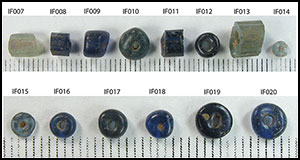Crossref Citations
This article has been cited by the following publications. This list is generated based on data provided by
Crossref.
Babalola, Abidemi Babatunde
2017.
Ancient History of Technology in West Africa: The Indigenous Glass/Glass Bead Industry and the Society in Early Ile-Ife, Southwest Nigeria.
Journal of Black Studies,
Vol. 48,
Issue. 5,
p.
501.
2018.
The Fetish Revisited.
p.
285.
2018.
The Fetish Revisited.
p.
289.
2018.
The Fetish Revisited.
p.
117.
Chouin, Gérard
2018.
Reflections on plague in African history (14th–19th c.).
Afriques,
Vol. 09,
Issue. ,
2018.
The Fetish Revisited.
p.
97.
2018.
The Fetish Revisited.
p.
165.
2018.
The Fetish Revisited.
p.
60.
Babalola, A.B.
Rehren, Th.
Ige, A.
and
McIntosh, S.
2018.
The Glass Making Crucibles from Ile-Ife, SW Nigeria.
Journal of African Archaeology,
Vol. 16,
Issue. 1,
p.
31.
2018.
The Fetish Revisited.
p.
145.
2018.
The Fetish Revisited.
p.
91.
2018.
The Fetish Revisited.
p.
175.
2018.
The Fetish Revisited.
p.
41.
2018.
The Fetish Revisited.
p.
171.
2018.
The Fetish Revisited.
p.
191.
2018.
The Fetish Revisited.
p.
78.
Babalola, Abidemi Babatunde
Dussubieux, Laure
McIntosh, Susan Keech
and
Rehren, Thilo
2018.
Chemical analysis of glass beads from Igbo Olokun, Ile-Ife (SW Nigeria): New light on raw materials, production, and interregional interactions.
Journal of Archaeological Science,
Vol. 90,
Issue. ,
p.
92.
2018.
The Fetish Revisited.
p.
249.
2018.
The Fetish Revisited.
p.
1.
2018.
The Fetish Revisited.
p.
339.
